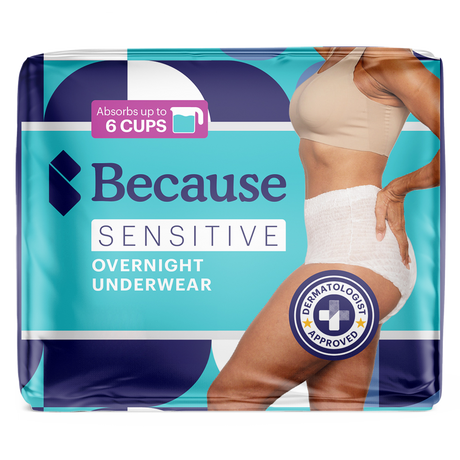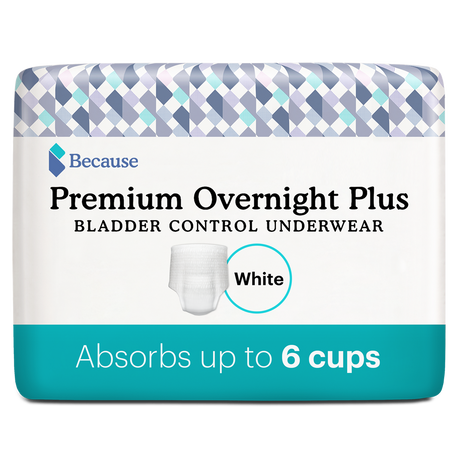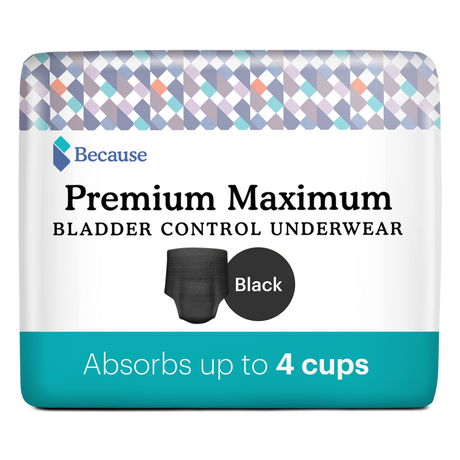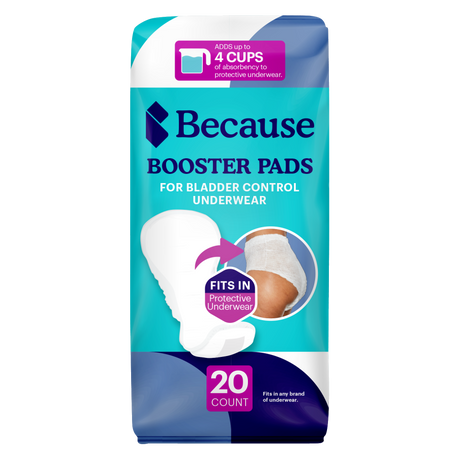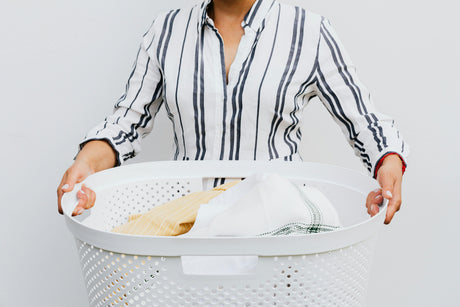Living with urinary incontinence is challenging, affecting not only physical health but also emotional well-being. When incontinence is accompanied by kidney failure, the impacts can be much more significant.
Kidney disease is often called a “silent disease” because many people experience a significant loss of kidney function before they notice any symptoms. However, the onset or worsening of urinary incontinence is often one of the first warning signs of kidney disease.
Let’s explore the connection between urinary incontinence and kidney failure to understand better how kidney disease affects bladder control. We’ll also discuss practical coping strategies and treatment options to help you navigate these challenges with resilience and dignity.

Can Kidney Failure Cause Incontinence?
Yes, incontinence, or loss of bladder control, is one way chronic kidney disease and kidney failure can affect your body. The kidneys play a vital role in maintaining the body's balance of fluids and waste products.
When the kidneys fail, they can no longer properly filter waste and excess fluids, leading to increased urine production and urinary urgency. Additionally, kidney failure can weaken the muscles and nerves involved in bladder control, further contributing to incontinence issues.
Understanding Kidney Disease
Did you know your kidneys filter about 50 gallons of blood daily? Their primary job is to filter out excess fluids, harmful toxins, and waste. But they also contribute to many other key body functions, like vitamin D production, blood pressure regulation, and balancing your body’s pH.
Chronic kidney disease, or CKD, affects about 15% of American adults, and many in the early stages don’t even know they have it. By definition, chronic kidney disease occurs when kidney function begins to decline, meaning the kidneys can no longer do their primary job of filtering toxins and waste from the blood.
The two most common causes of kidney disease are high blood pressure and diabetes. Other possible causes include acute kidney injury, chronic kidney infections, scarring due to frequent urinary tract infections, or prolonged urinary tract obstruction related to kidney stones, enlarged prostate, or cancer. Chronic kidney disease can also be a complication of other health issues, such as obesity, or related to certain medications.
CKD can cause extensive damage to the body and lead to serious health issues like stroke, heart disease, anemia, and even early death. Incontinence and kidney failure are linked in multiple ways.
Symptoms of Chronic Kidney Disease:
The symptoms of CKD can mimic other health issues, so it’s important to speak with your doctor if you are experiencing unexplained changes in urine output.

Kidney disease is typically easily diagnosed with a urine or blood test at your doctor’s office. A kidney biopsy is also sometimes required to determine the extent of damage done to the kidneys.
The Connection Between Incontinence and Kidney Failure
Our urinary system includes the bladder, kidneys, ureters, and urethra. The kidneys regulate our body's chemical balance by filtering waste and excess fluid from the blood.
The fluid and waste products are moved through the ureters into the bladder. When the bladder is full, the urge to urinate prompts us to empty the bladder. The entire process is complex and interconnected. If one step becomes compromised, we may experience bladder control issues known as urinary incontinence.
The Impact of Kidney Disease on Urinary Functions
As we age, the muscles and organs of the renal system also age, impacting bladder and kidney function. This deterioration leads to the early stages of CKD, where the kidneys’ ability to filter efficiently is compromised.
This allows more waste and toxins to remain in the bloodstream and more fluid to be transported into the urinary tract. The additional volume of fluid and waste leads to increased urinary frequency. The tissue of the bladder also weakens and loses elasticity, compromising its ability to hold urine for long periods.
This can lead to unexpected urine leakage and kidney disease incontinence, especially at night. The amount and frequency of leakage can vary from person to person, depending on age and overall health. In some cases, the natural loss of kidney function due to age is accelerated by urinary tract blockage, underlying health issues, medications, and various other factors.
Common Types of Incontinence Associated with Kidney Disease
The need to urinate more frequently than usual, coupled with a strong urge to urinate, are often the first signs of CKD. This type of incontinence is called overactive bladder (OAB) or urge incontinence.
How Kidney Failure Contributes to Incontinence Development
The complex connection between kidney function and the urinary system can lead to several factors that exacerbate incontinence development.
As the kidneys fail to filter waste and excess fluids from the bloodstream, urine production also increases, overwhelming the bladder’s capacity and increasing urinary urgency and leakage. This additional fluid production also leads to increased pressure on the bladder, weakening the bladder muscles and reducing their ability to hold urine.
Kidney failure can also lead to electrolyte imbalances, such as calcium, potassium, and sodium, which are crucial for proper nerve and muscle function. These imbalances can affect the nerves and muscles involved in bladder control, compromising their coordination and strength.
As kidney failure progresses, it can also result in a type of nerve damage known as uremic neuropathy. This nerve dysfunction can interfere with communication between the bladder and the brain, disrupting the signals that influence urinary continence.
And finally, certain medications used to manage kidney failure can also contribute to incontinence. For example, diuretics, which are prescribed to remove excess fluid from the body, can lead to increased urine production and worsen urinary incontinence symptoms.
Coping with Incontinence and Kidney Disease
Living with incontinence and kidney disease can present unique challenges. But with the right strategies, you can effectively manage your symptoms and minimize their impact on your daily life. Let’s explore some proactive coping strategies to help you navigate these challenges with discretion and dignity.
Protective Undergarments
Incontinence and bladder protection products can provide a sense of security and help manage leakage effectively. Incontinence pads are the ideal solution for managing minor leaks. They are similar to menstrual pads but specifically designed to collect urine.
If you’re experiencing heavier leaks, protective underwear can be especially helpful. Both products come in a variety of sizes, shapes, materials, and levels of absorbency. Take our bladder protection quiz to find the best product for you, and get a sample pack to try!

Maintaining Proper Hygiene and Reducing Incontinence Odors
Maintaining good hygiene is key for reducing odors associated with urinary incontinence. Regularly changing protective undergarments and cleansing the area with pH-balanced flushable cleansing wipes can help prevent skin irritation and odors.

Skin Care for Incontinence
Incontinence can increase the risk of skin irritation, adult diaper rash, and infections. To keep the skin healthy, keeping the perineal area clean and dry is important. Applying a protective barrier cream is also essential for reducing irritation. Watching for signs of irritation or skin breakdown is crucial, as prompt intervention can prevent further complications.
Tips to Manage Incontinence at Work and Social Settings
A little advanced preparation can help you navigate work and social settings discreetly and confidently. Know where the nearest restroom is and have essential supplies on hand to manage unexpected situations when they arise. Opt for loose-fitting and dark-colored clothing and keep a change of clothes nearby whenever possible.
Managing Incontinence and Supporting Kidney Health
Unfortunately, kidney damage typically isn’t reversible, but it can be controlled with medical interventions and lifestyle adjustments.
Foods to Avoid
Altering your diet is one of the easiest ways to manage the symptoms of incontinence and CKD. Start by cutting out foods and beverages that irritate the bladder and harm internal organs, such as alcohol and caffeine.
Limiting sodium is also key for reducing fluid retention, so consider cutting back on processed and fast foods and foods with added salt. Artificial sweeteners can also irritate the bladder, so opt for natural sweeteners instead.
Hydration and Fluid Intake
While it may seem counterintuitive, hydration is critical when you have CKD, and dehydration can also contribute to incontinence. Drinking plenty of water and clear fluids throughout the day will help your kidneys filter waste more efficiently and may help with symptoms of kidney disease and incontinence.
Supplements
Bladder control supplements offer a natural way to promote a healthy bladder and reduce leaks. Active ingredients like pumpkin seed, cranberry, probiotics, and soy germ are especially beneficial for supporting urinary health and combating the symptoms of urinary incontinence.
Be sure to talk to your doctor before making any changes to your supplement routine. Your doctor is an excellent source of personalized advice based on your overall health and type of incontinence.

Exercise and Weight Management
Regular exercise and maintaining a healthy weight are key for kidney health and reducing incontinence symptoms. Getting your body moving for at least 30 minutes daily can also help control blood pressure and blood sugar, which is essential for healthy kidneys.
Although pelvic floor exercises won’t help with kidney disease, they can help minimize incontinence symptoms over time. If aerobic activity and high-impact exercise aren’t your thing, consider some lower-impact activities like walking and yoga.
If you aren’t currently exercising regularly, be sure to talk to your doctor about which types of physical activities are appropriate for you. The key is to pick something you enjoy, start slowly, and build up your endurance over time.
Bladder Training
Bladder training is a valuable technique that can help you regain control of your bladder and reduce the frequency of accidents. It begins by noting the current frequency of urination and gradually extending the time between urination to train the bladder to hold urine longer.
This process trains the bladder to stretch and accommodate larger amounts of urine. Bladder training requires consistency, but with time, it can reduce the urge to urinate and minimize incontinence episodes. Your doctor can provide guidance and support throughout the process.
Reducing and Managing Stress
Stress can worsen incontinence symptoms and affect overall well-being. Implementing stress management techniques can help you cope with the challenges of daily life with CKD. In addition to relaxation techniques like yoga and exercise, reach out to support groups, friends, and professionals for emotional support.
Regular Medical Checkups
You should report any changes in urination to your healthcare provider right away. If you have been diagnosed with CKD and incontinence, regular checkups are important for managing your symptoms and minimizing the progression of the disease.
It’s also important to note that many underlying health conditions, such as hypertension and Type 2 diabetes, can worsen kidney disease. Be sure to address existing health issues with the help of your healthcare professional.
Treatment Options for Incontinence with Kidney Disease
When managing incontinence with kidney disease, various treatment options can help alleviate symptoms and improve quality of life. In addition to the lifestyle interventions mentioned above, certain medications can help to relax the bladder and reduce overactive bladder contractions.
Medical devices, such as catheters, pessaries, or nerve stimulation devices, may be used to reduce urine leakage. In cases of chronic renal disease, your doctor may recommend dialysis to help the body get rid of waste when the kidneys can no longer do it on their own.
The choice of treatment depends on the underlying causes of incontinence and the severity of kidney disease. An effective treatment plan often requires a multifaceted approach, including ongoing collaboration with your healthcare professional.

Taking Charge: Managing Incontinence and Kidney Disease
Living with incontinence alongside kidney disease can pose some significant challenges. But, with proper understanding, support, and a proactive approach, you can manage your symptoms and maintain your quality of life.
By understanding the connection between incontinence and kidney failure and its impacts on the urinary system, you can regain a sense of control and implement effective strategies to regain your confidence and comfort.
Remember, everyone’s experience with incontinence and kidney disease is unique. Working with your healthcare provider to develop a personalized approach is important. By combining knowledge, support, and appropriate interventions, you can minimize the impact of incontinence and maximize your quality of life.
Sources:
National Institute of Diabetes and Digestive and Kidney Diseases (NIDDK). (n.d.). Kidneys: How they work. Retrieved from https://www.niddk.nih.gov/health-information/kidney-disease/kidneys-how-they-work
University of Rochester Medical Center (URMC). (n.d.). Kidney health quiz. Retrieved from https://www.urmc.rochester.edu/encyclopedia/content.aspx?contenttypeid=40&contentid=KidneyHealthQuiz#:~:text=The%20kidneys%20filter%20about%2050,are%20removed%20from%20the%20blood.
Centers for Disease Control and Prevention (CDC). (n.d.). Chronic kidney disease in the United States, 2021. Retrieved from https://www.cdc.gov/kidneydisease/publications-resources/ckd-national-facts.html
National Institute of Diabetes and Digestive and Kidney Diseases (NIDDK). (n.d.). Chronic kidney disease (CKD). Retrieved from https://www.niddk.nih.gov/health-information/kidney-disease/chronic-kidney-disease-ckd
MedlinePlus. (n.d.). Creatinine - blood test. Retrieved from https://medlineplus.gov/ency/article/004010.htm



